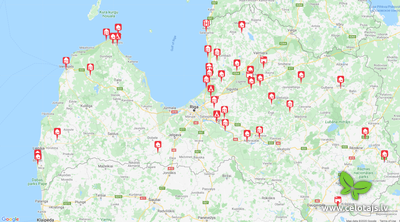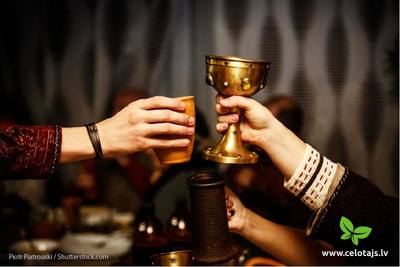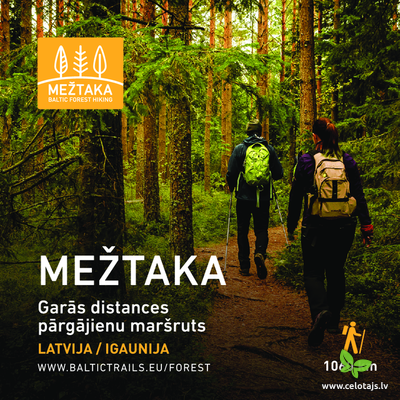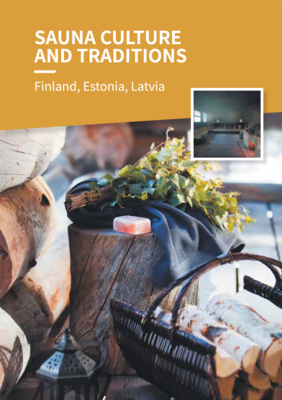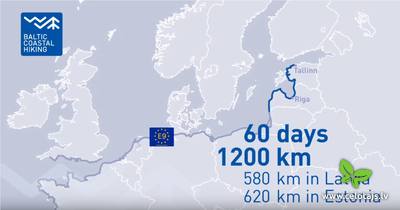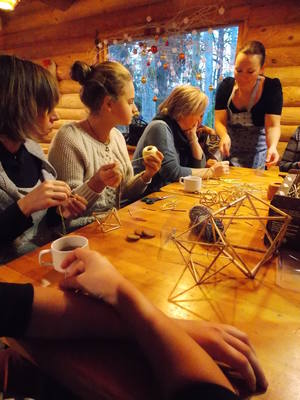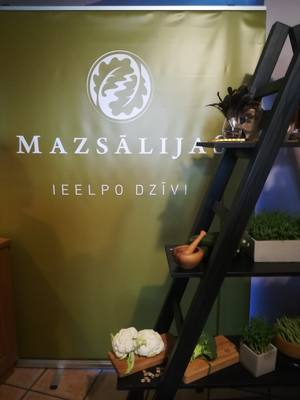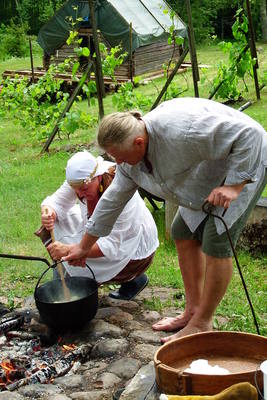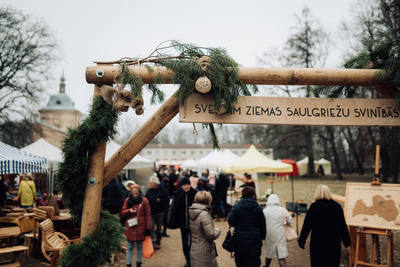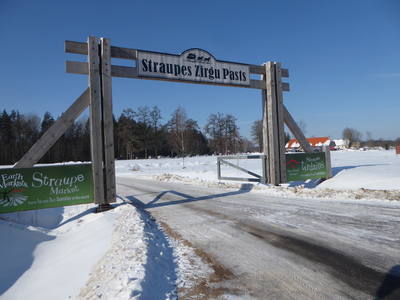Accommodation news
An increasing number of rural tourism accommodation owners are ready to take all required safety precautions and receive guests who need a place to stay for self-isolation or quarantine. The sites are located in all regions of Latvia, most of all – in the central part of the country.
We keep an updated list of such accommodations and their online map >>> HERE.
As summer approaches and thoughts linger on Latvia's beautiful nature, delicious food and its people, but it is not yet allowed to leave our homes, we invite you to get acquainted digitally with the places and opportunities offered by "Flavours of Livonia", with hope that soon they can be visited for real!
"Flavours of Livonia" - it's not just dining in a pub! It is an opportunity to meet our own hosts - food producers and providers, who are amazingly versatile, able to produce their own products, receive tourists, feed and entertain them, all in accordance with local food growing and cooking traditions. Most of the Livonian-era food traditions have survived to the present day, alternating with traditional Latvian cuisine, and these flavors can be tasted thanks to entrepreneurs who respect local food and traditions, using locally grown food ingredients, take care of the environment around the and are proudu of their delicious food!
The brochure introduces the long-distance hiking route FOREST TRAIL, which passes ~ 1060 km through the forests of Latvia and Estonia, from Riga to Tallinn. In Latvia, FOREST TRAIL runs through the Gauja National Park, the Northern Gauja Forestlands and Veclaicene. In Estonia, FOREST TRAIL runs through the Haanja uplands, the Setomaa un Peipsimaa regions and further along the coast of Northern Estonia - to Tallinn. The route along the Estonian part includes the Lahemaa National Park and the coast of Northern Estonia, which is the land of the most impressive rocks, waterfalls and clints in the Baltic States. You will recognize FOREST TRAIL as Mežtaka in Latvia and as Metsa Matkarada in Estonia.
The FOREST TRAIL includes all the typical forest types and wildlife elements of the Baltic States - plants, beasts, fungi, etc.
The FOREST TRAIL is divided into 50 one or two-day hiking sections, each of which is ~ 20 km long. You can choose any section of the hike. The brochure includes a map of the hiking route.
Available languages: Latvian, English, Estonian, Russian, German
>>> Brochure (PDF)
The sauna tradition is thought to originate somewhere in northern Europe around 2,000 BC and has remained an important part of cultural life to this day in many countries including Estonia, Latvia, and Finland. The locals indeed like to debate who now has the best saunas, but the truth is that their building techniques and traditions have evolved mostly in parallel for the past few thousand years, which is why saunas are a way of life and in many ways, the history of sauna is really a history of us. In addition to the sauna traditions the countryside provides a varied ambience of heritage – numerous national parks, contrasting coastlines, historic sites, varied landscapes, rich wildlife, charming small towns full of history and peaceful milieu.
Visiting all three countries in one trip is very easy – relatively short travelling distances between and within the countries due to their small size, no border formalities since all are in EU, the same time zone, the same currency and similar climate.
Baltic Coastal Hiking is a long distance hiking route part of E9 along the coast of the Baltic Sea. The hiking route starts at the Lithuanian-Latvian border in the village of Nida in Latvia and finishes at the Port of Tallinn in Estonia. The total length of the route is 1200 km, of which 580 km are in Latvia, and 620 km in Estonia; the route can be taken in both directions and Tallinn can also be a starting point. The route is divided into days and difficulty levels, which allows you to choose the most suitable distance for yourself. Join Baltic Coastal Hiking whenever you want, take a break whenever you like and return when you feel it is the right time for hiking! More information www.coastalhiking.eu.
Creative workshops offered by the “Sauleskalns” crafts house allow children and adults to discover in himself talents as a craftsman and artist. Professional teachers help to create wonderful stuff that pleases yourself and others.
“Puzurs” is a traditional Latvian room decoration for Christmas. It is made from straw, and its’ light, airy form and precise geometry is fascinating. This decoration really brings festive feeling.
The crafts house also offers workshops in gingerbread baking and making traditional Christmas to help everyone get prepared for Christmas celebrations.
“Mazsālijas” is a guest house on an organic farm. The farm breeds fallow deer and trout, grows vegetables and fruit, makes wine. The hostess offers a 4 hour food workshop for small groups of visitors to cook a meal together in a friendly atmosphere. During the food workshop visitors will learn how to cook a meal on a firewood stove from the home produce – vegetables, trout, and fallow deer meet. The food workshop includes cooking a three-course meal: a starter (fallow deer tartar, salted trout), the main course: trout fried on butter with steamed vegetables, fallow deer meet with rosemary and potato gratin, a dessert: cream cheese with strawberry sorbet.
According to an old Latvian belief, nine dishes should be served for the festive Christmas meal. The hostess at “Vīnkalni” country house will teach visitors how to cook three Latvian traditional dishes:
‘Biguzis’ – a traditional country dessert with rye bread, whipped cream and fresh berries. Its ingredients are rye bread, cranberries or lingonberries, honey, cinnamon and whipped cream. Mature rye bread is crushed or grated. Cranberries are squeezed in juice, diluted with water, sweetened with honey and poured into bread. When the bread has sucked into the liquid, it is topped with whipped cream.
Fresh cheese – made from cow's milk adding various herbs and spice (cumin, hemp, greens).
Buns and cakes. It is said that in Latvian folk tradition round cakes and buns in the form of a crescent were baked to honour the Sun and the Moon. Today they are often baked for celebrations and festivities. The traditional Latvian buns ‘pīrāgi’ are made from yeast dough, are 5-13cm long in a curved form like a crescent. They are filled with bacon and onions or with cottage cheese or apples.
On December 21, Valmiermuiža will gather local producers from all around Latvia, offering homemade bread, cheese, smoked goods, lamprey, honey, herbal teas, spices, homemade wine, beer, juice, candied fruit, hard candy, gingerbread cookies and lots more.
Everything offered at the fair is natural and, hence, healthy, made by locally grown plants or gathered in the clean forests and meadows of Latvia. Local craftsmen will offer woollen socks, mittens, crochets, hammered work, wooden toys and jewellery to give them as presents to friends and relatives. Items made by local craftsmen would make our ancestors proud, as they have been made according to the best traditions.
Along the fair all visitors will have an opportunity to enjoy a varied culture programme, including activities to get better acquainted with the traditions of the annual customs, learn songs and games, master some of the traditional crafts and much more.
Those who sell and those who buy are looking forwards to meet on the December 15 Christmas market at Straupe! There will be lots of seasonal treats and goodies for your festive table. To name just a few: fresh carp, a specially prepared quince elixir, vacuum packed beef, lamb, turkey, freshly cooked smoked meat, gingerbread dough, candy, marmalade, tea and honey jars. It will be a great and rich market that will fulfil all your wishes in the run-up to Christmas!
